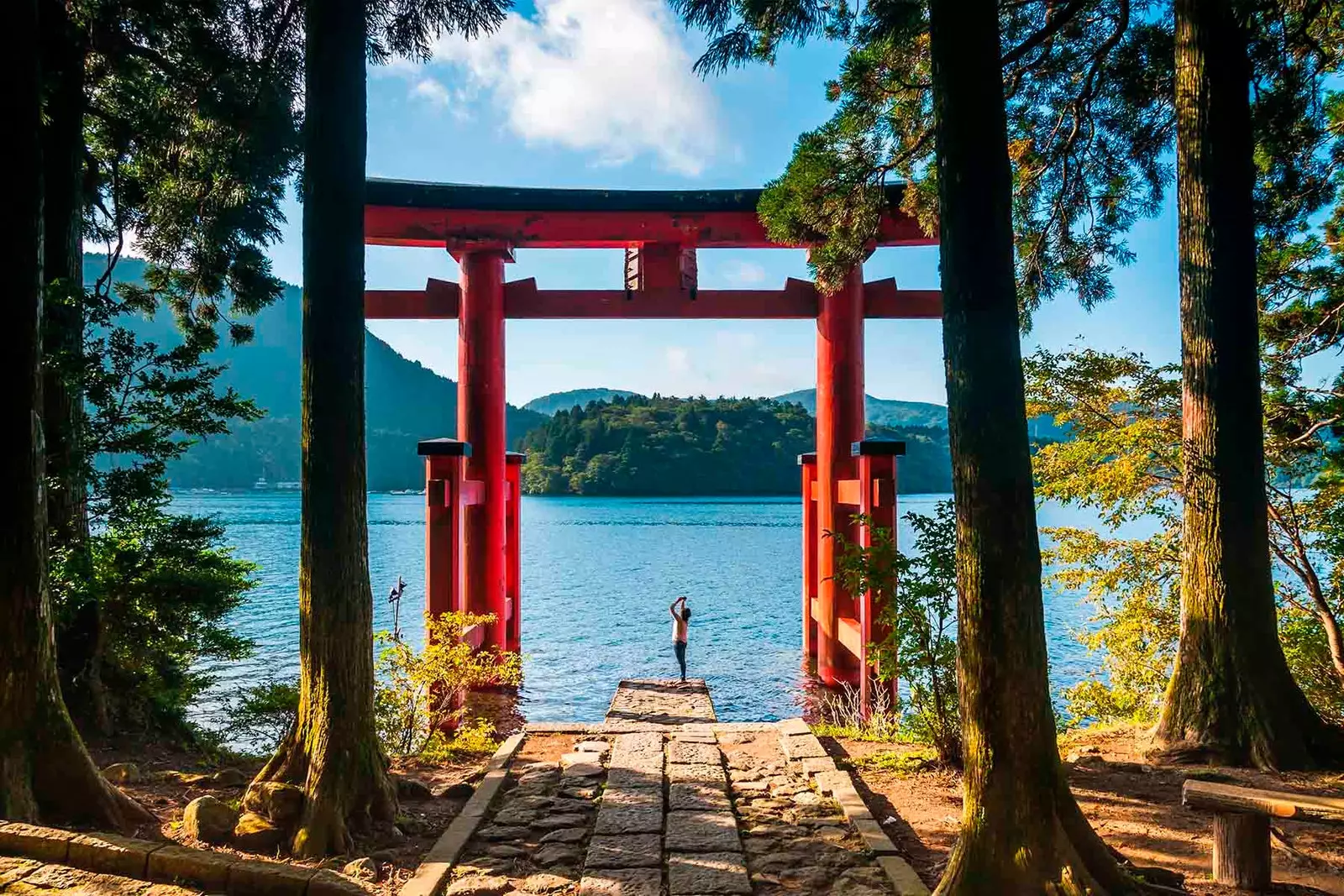
Art, history and nature: Hakone has it all
If we add to this a large number of museums, a nature very well preserved and views impressive, nothing less than those of the Mount Fuji , Hakone is a destination to take into account when planning our trip.
HISTORY
The city of Hakone ( ) , located in the Kanagawa prefecture, to the East of the Kanto region, has a tradition of visitors that goes back centuries. This is so because Hakone was one of the obligatory stops (shukuba) for Tokaido route users ( ), one of the five paths that linked Kyoto with Edo , ancient Tokyo, during the Edo period.
The Tokugawa clan placed one of the checkpoints of this route in this area and, as a result, all users of this road had to show your travel permits here and letting officers check that they were not carrying weapons or other dangerous items, in theory to protect Edo from enemy attack. They also made sure that no woman should travel alone , as unaccompanied women were prohibited from this route. The reason was that in Edo they were held against their will to many of the women of the feudal lords. With this prohibition, the shogunate ensured that none of them could escape to try to return home.
During the Meiji era, the emperor placed his summer villa on the shore of Lake Ashi, Today it has become one of the main attractions in the region. As a result of his past, Hakone is a town accustomed to having visitors every day, with which it offers many activities, especially outdoor , for the traveler who reaches its streets.
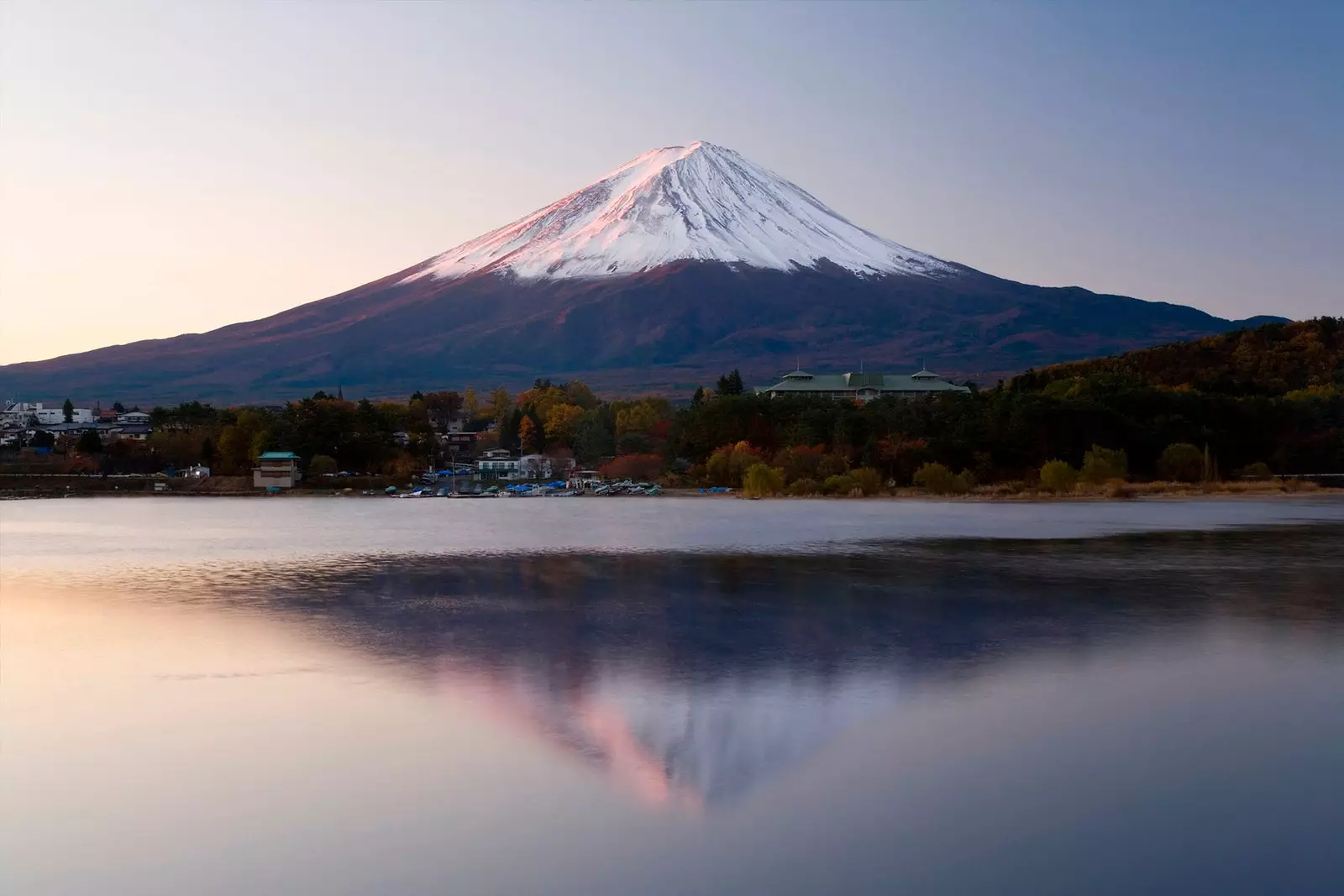
One of the most coveted stamps of Hakone
TO DO?
Hakone is very close to the Japanese capital, Tokyo, so getting to this city It's simple and not too expensive. especially if you have the JapanRail Pass . You can depart from Tokyo, Shinjuku or Yokohama station to Odawara , and from there to Hakone-Yumoto. If you do not have the JRP, the price from the capital varies between 20 or 30 euros, depending on the type of train. From other parts of Japan, such as Nagoya or Osaka , can also be reached easily, but is obviously more expensive.
Once in Hakone, it is recommended spend at least one night in one of its beautiful ryokan (traditional Japanese hotels) to enjoy all that Hakone has to offer relaxed and unhurried. If possible, it is better visit during the week , as the weekend is filled with hundreds of visitors from different parts of Japan, eager to a bit of silence and tranquility.
There are many possible activities, all of them intimately related to nature or history, as well as a large number of thermal baths (onsen). Not surprisingly, Hakone, being an area of volcanoes, is also famous for its hot volcanic waters.
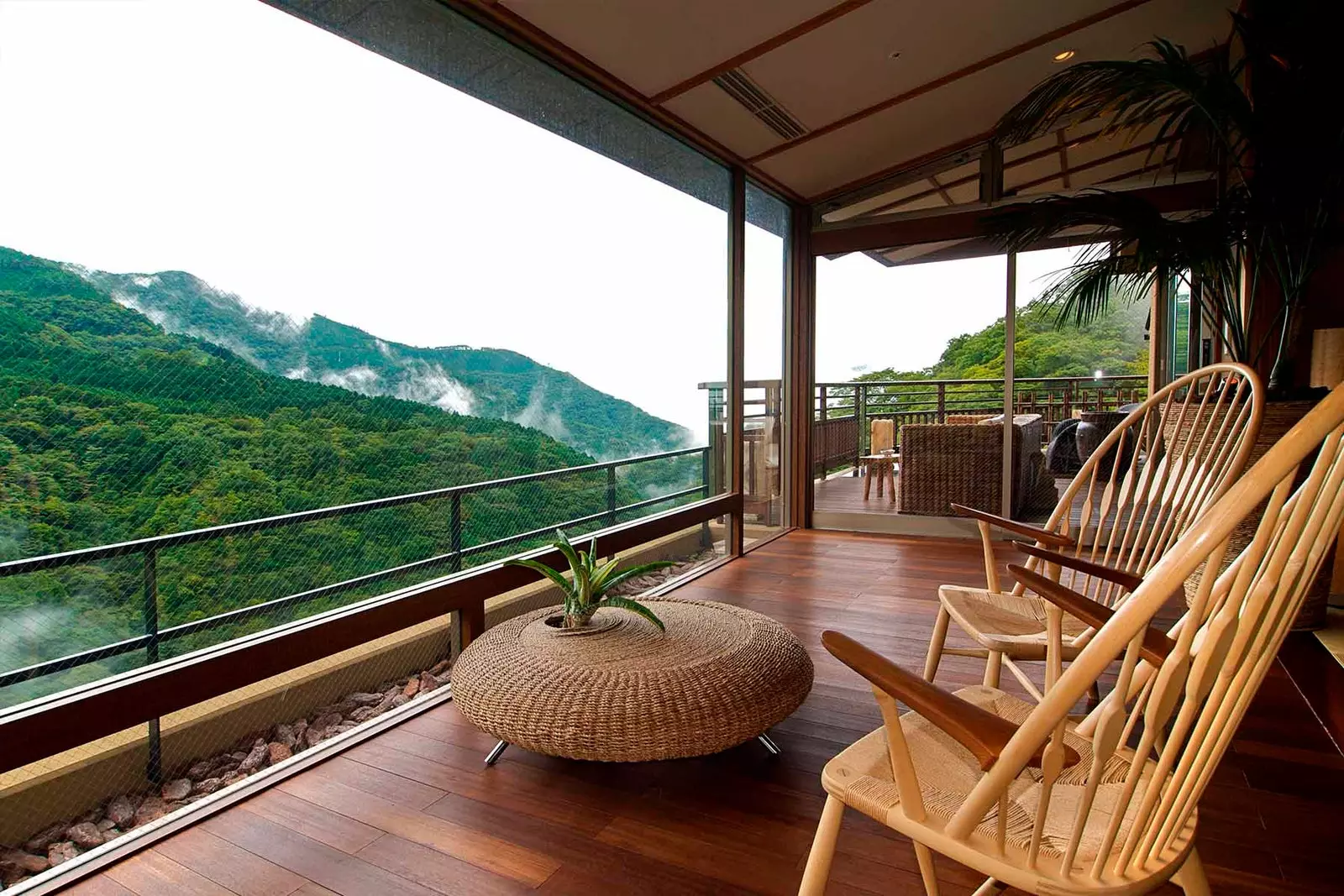
Views from a 'ryokan' of the city
It is important to know that almost every point where we go within the Hakone area, we will have to take a means of transport if we don't want to have to walk a lot. Precisely for this reason there is HakoneRail Pass which saves money and time ( can be purchased at Odawara station ) .
As soon as you arrive by train at the station Hakone-Yumoto , located 100 meters above sea level, we can enjoy our first relaxing moment in a onsen. Near this station are some of the best in the area, most of them exterior and with views of the forest and the mountains.
Among these are tenzan, with natural pools on the edge of a beautiful wooden slope; Hakone Kamon , with exterior stone and wood bathtubs and in which they offer you a hot tea after the bath, or senkei, with restrooms located in a terrace on the top floor of a building , which allows bathing with views of Mount Hakone and the city. However, there are so many thermal baths that we will find on our way throughout the entire region, that it will be a matter of choose when we most want to take a bath of volcanic waters, since almost all of them are worth it.
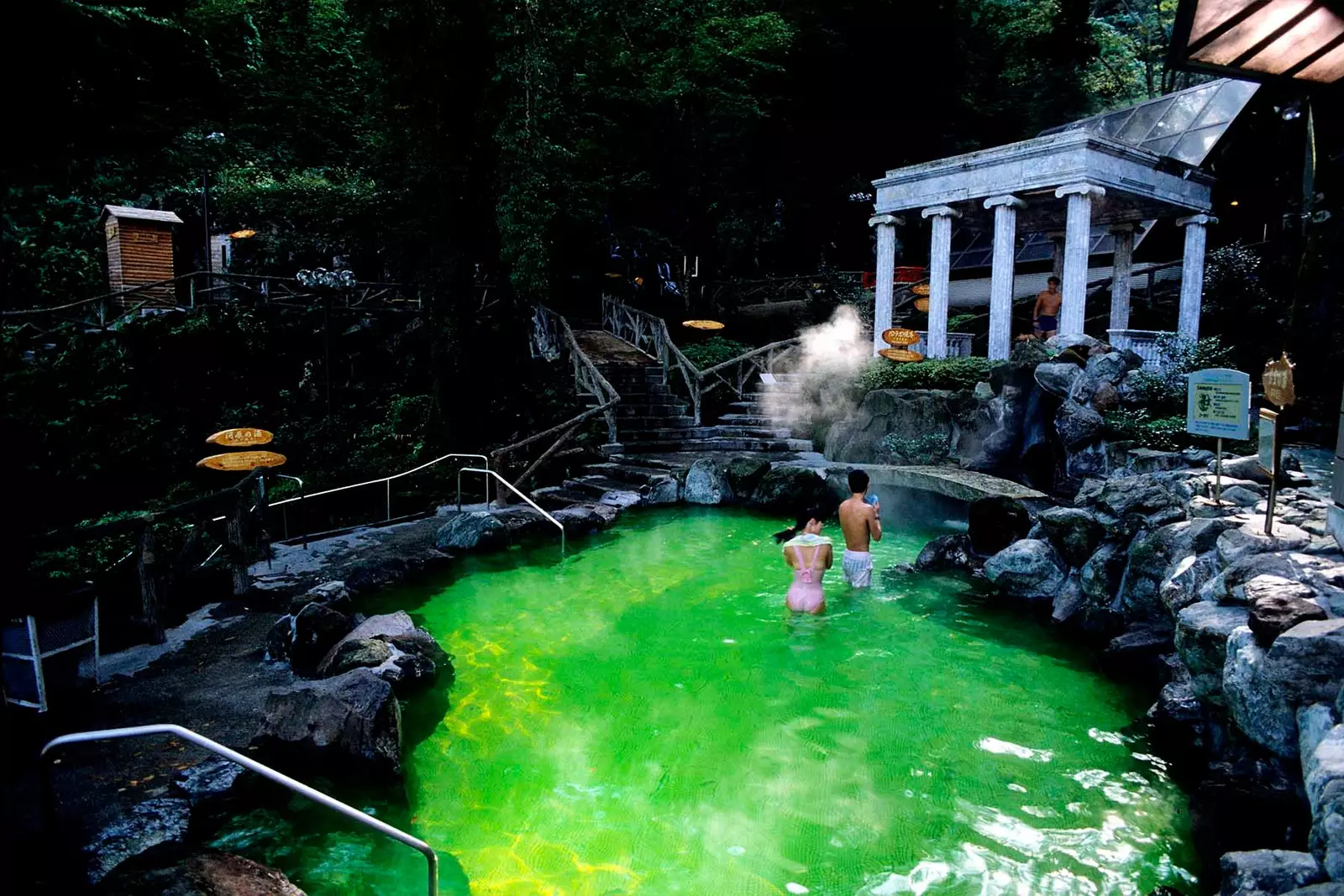
The 'onsen' are part of the typical landscape of Hakone
After Hakone-Yumoto, if we take the Hakone Tozan Train , one of the few mountain railways of Japan, we will zigzag between hills covered in beautiful wildlife until you reach Gora. Gora It was until 1914 an abandoned area where they ended up huge chunks of rock that fell from the mountain. It was in that year that the Gora Koen Park , the first french style garden in Japan.
Today, the visitor can enjoy an impressive number of flowers of all kinds, placed forming precious geometric figures. In Gora there is also very good bathrooms of volcanic waters, and craft activities such as ceramic or glass creations.
Leaving behind the flowers of Gora, we will go up to the Hakone Funicular, which will take us up a steep hill to Sounzan. Before, it was possible to take the cable car from Hakone at this point of our trip, but today, due to the dangerous gases escaping from the crater Owakudani , it is not allowed to take the cable car in Sounzan, and instead, a bus takes the visitor to the Owakudani station ( , or great boiling valley ), before the cable car transfer point.
From here, we can finally enjoy one of the reasons that brought us to Hakone in the first place: the Mount Fuji . If we arrive early in the morning, and we are lucky enough to enjoy a clear sunny day , Mount Fuji itself, with its symmetrical and imposing figure, and its snowpeak , will greet us from the horizon.
For many, especially for those who they are not too fond of mountaineering, the view of Mount Fuji from Hakone deserves much more than climbing to the top of the volcano. Either way, it's a panorama that will leave you breathless, and will make the visit to this area of Japan totally unforgettable.
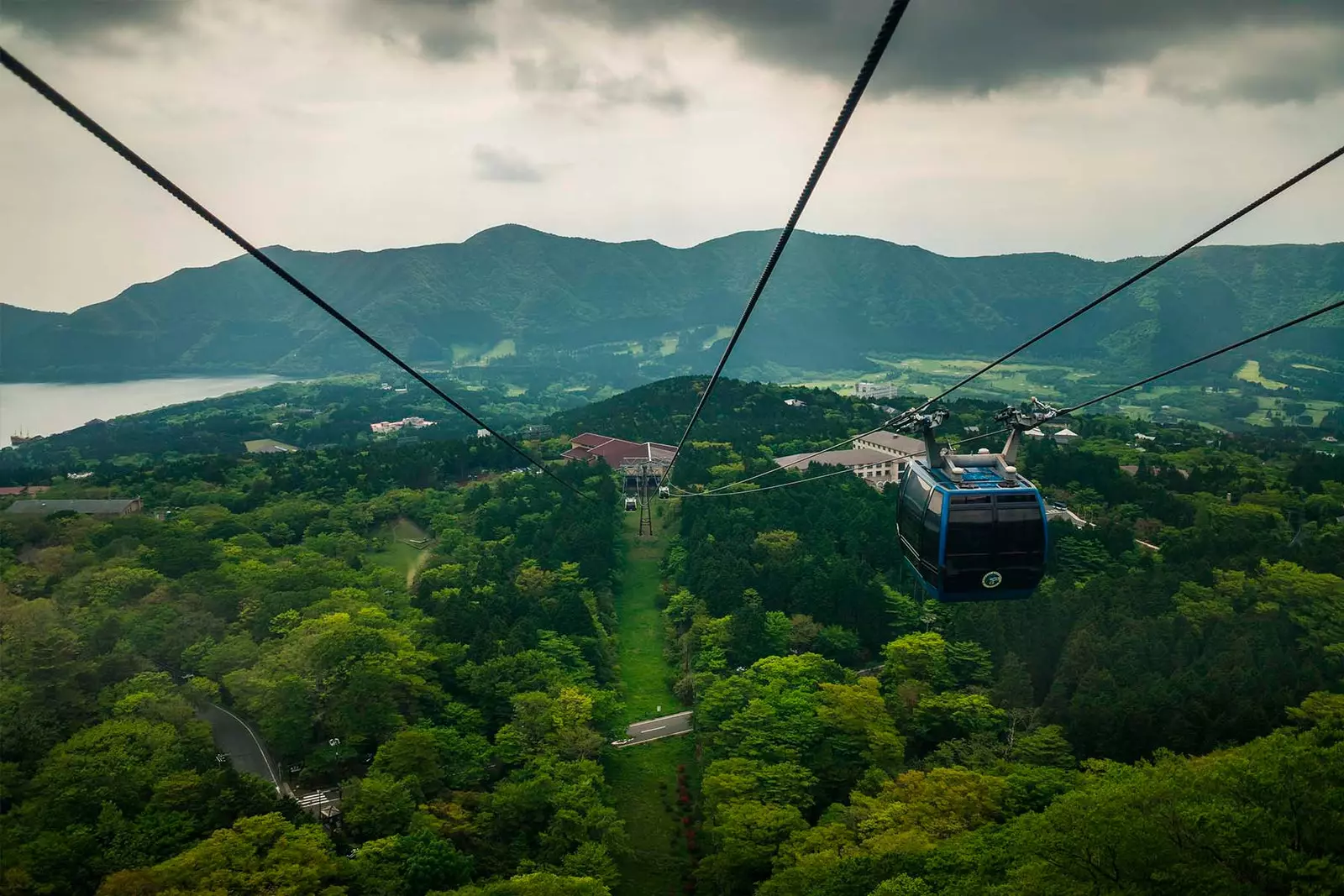
Road to Sounzan
In Owakudani we can also buy omiyages (souvenirs of our trip) and taste one of the most well-known delicacies of Hakone, the so-called Owakudani black eggs (kuro-tamago) . Despite their name and appearance, they are perfectly normal boiled eggs, it is only the way they have been cooked that gives them that characteristic appearance: they are boiled for 60 minutes in the volcanic waters to then be steamed in steel baskets during 15 minutes.
Precisely because the waters in which they are cooked contain sulfide , the eggs acquire that blackish tone. But contrary to what one might believe, they are not dangerous for consumption. In fact, it is said that for every egg you consume you gain seven years of life , so better not waste your time and eat as many as you can!
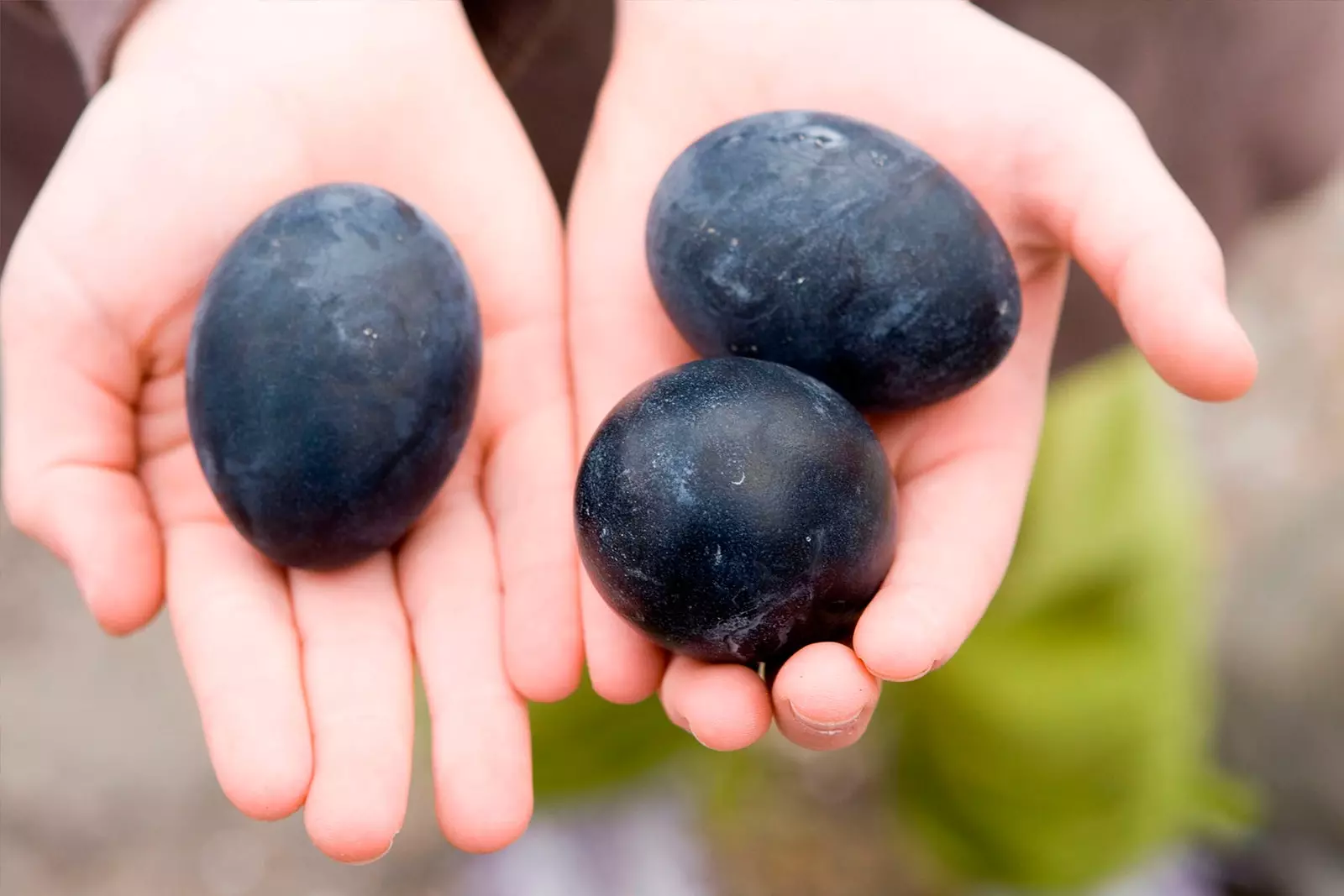
Some legendary eggs
In Owakudani you can finally take the cable car that will take us by air to our next stop, Togenkaiko . At this station you can get on a ship with pirate aesthetics , for some a bit tacky and out of context , to navigate Lake Ashi for 40 minutes and enjoy the unbeatable views of nature that surrounds the area. As a detail, the view from the deck It changes a lot depending on the time of year we go, but it is always worth it for its beauty.
The bizarre ship will leave us in the last stop on our trip and in which we can enjoy the part more traditional of the same, Hakodate-Machi-ko. From this pier, we can walk to the places with more history of Hakodate. The best known and most visited, especially by Japanese tourists, is the famous check Point of the Tokugawa shogunate for the Tokaido route.
After having been for years the excuse to control who entered and left the Edo capital, with the arrival of the Meiji Restoration , in 1868, was destroyed. It would not be until the year 1983 that it was decided to rebuild it, After finding some documents where the old building was described in detail , which facilitated its restoration. To help the visitor understand how it worked, stone sculptures depicting officers at work at the checkpoint.
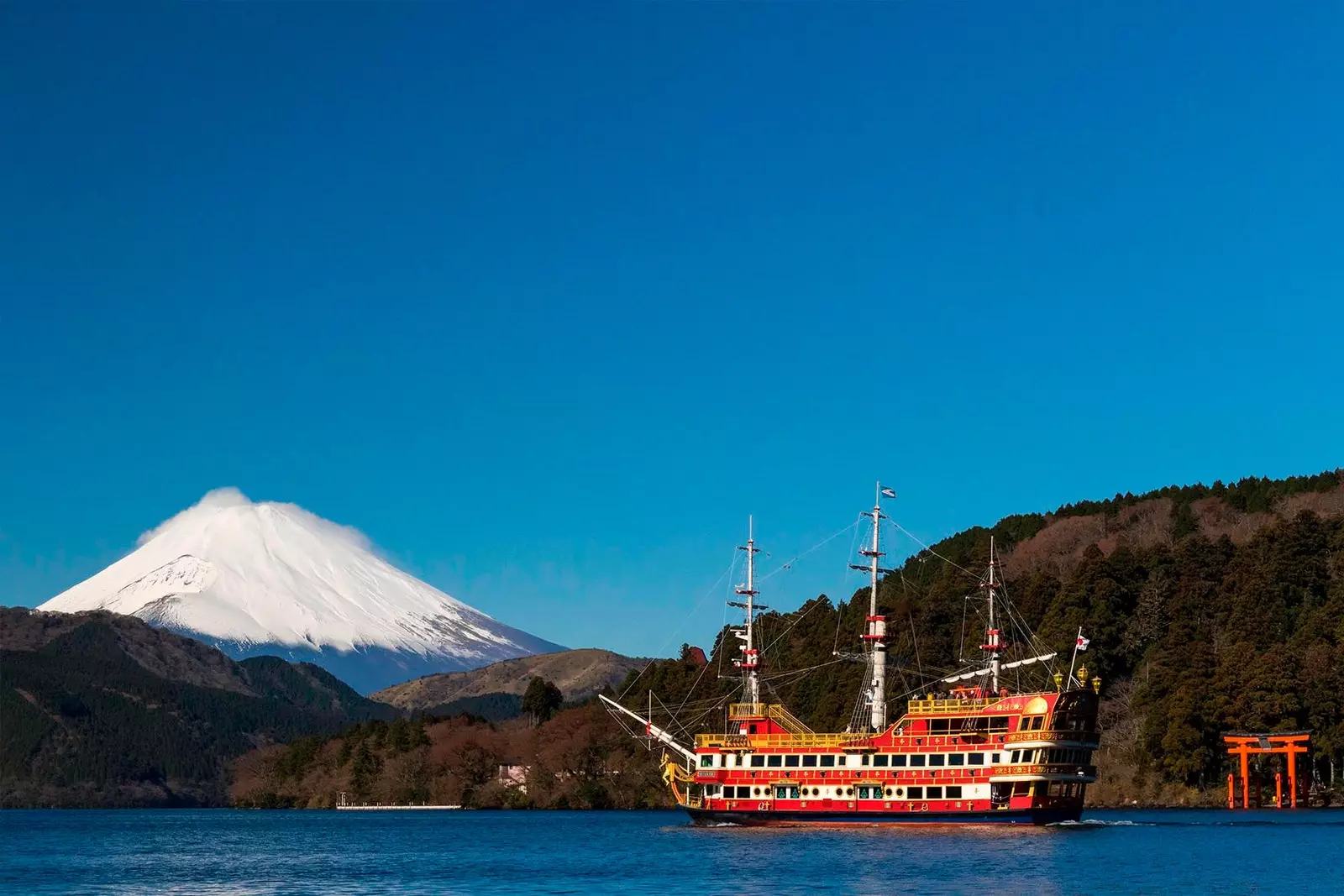
You love it... or you hate it
Another of the most famous and visited historical places is the hakone buddhist temple (Hakone Jinja, ) . This temple, located at shore of Lake Ashi, dates from the year 757, and before being moved, it was at the peak of the Mount Komagatake. The temple was moved to the riverbank in 1667, in theory to calm the wrath of the nine headed dragon which, it was believed, lived at the bottom of the lake. What you see today is a reconstruction , but still, the sight of its torii, or gateway, on the shore of the lake, totally worth it , especially if you want to enjoy a walk around the lagoon at the same time.
To end, Hakone has many museums that will delight lovers of history and art. Among the best are the Open Air Museum (Hakone Open Air Museum), an amazing gallery that seeks to create a harmonic balance between art and nature , hence many of its pieces are found outdoor . The view of the works together with the mountains that surround the enclosure is totally recommended.
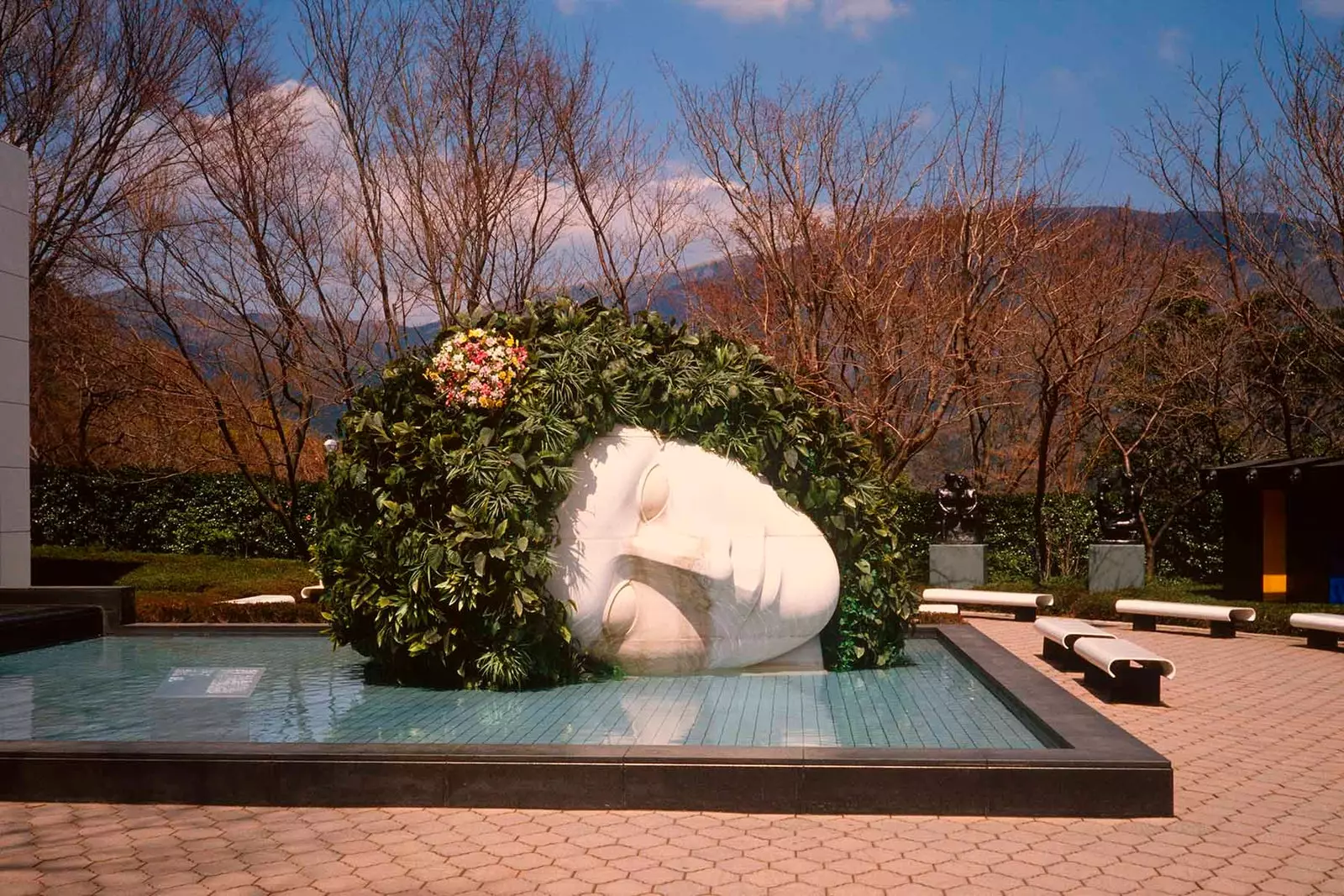
The art-nature integration will leave you speechless
Other famous art galleries are the Polish Art Museum , with its windows and works by authors as important as Fujita or Picasso , or the Little Prince Museum , dedicated to this work and its author. Contains replicas of the places where Saint-Exupéry studied and worked and lots of detailed information.
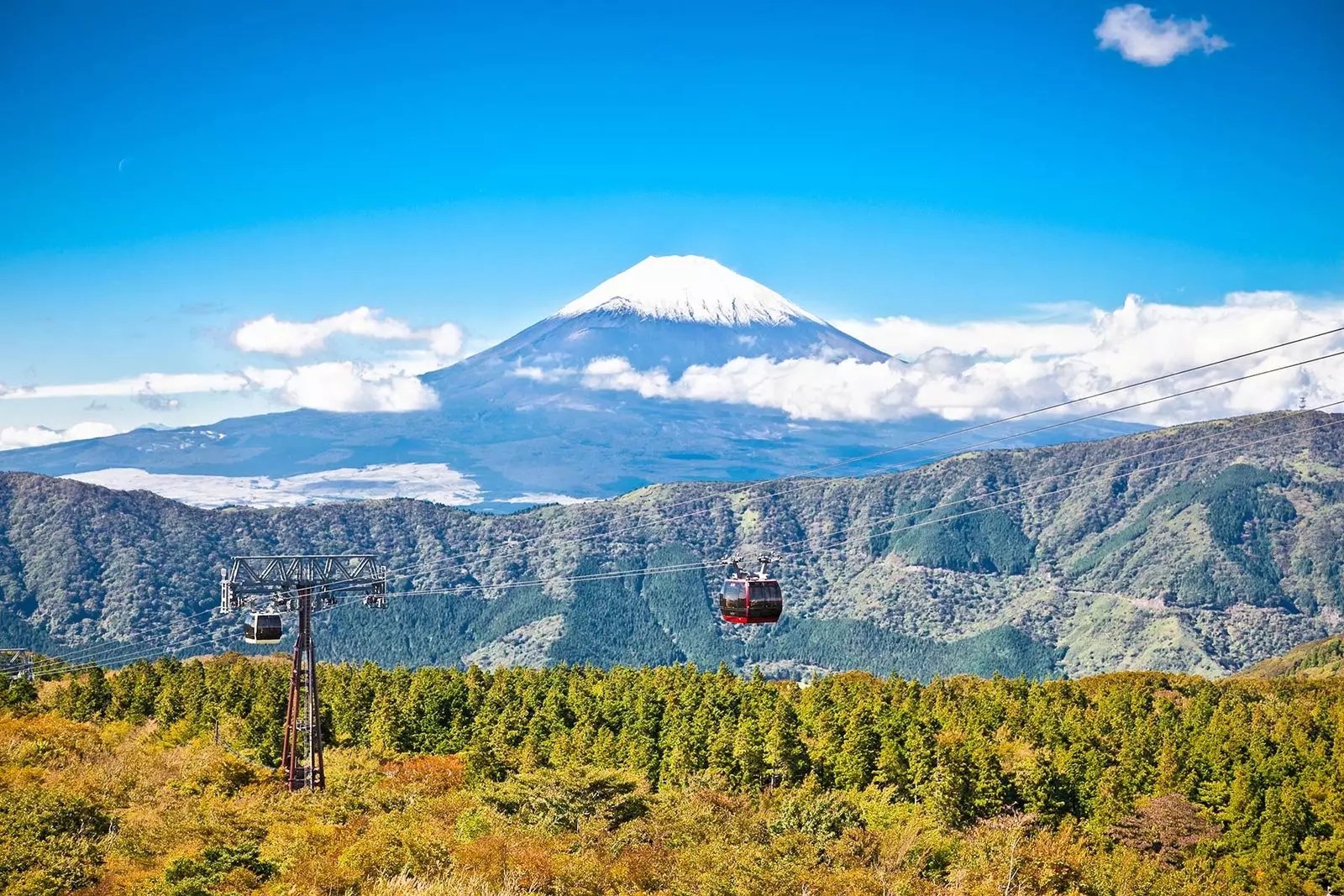
Hakone, are we coming back?
